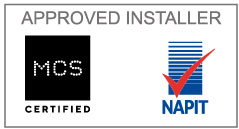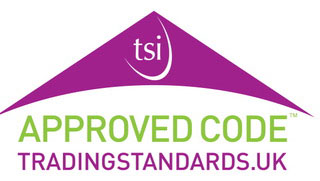Feed In Tariffs
The Feed in Tariff scheme is a Government funded cash payment scheme which pays for every unit of electricity generated through renewable sources, such as solar photovoltaic (PV) systems. The tariff is paid for 20 years and will rise in line with the retail price index (RPI). Every unit of green electricity produced is paid for under the tariff scheme regardless of whether it is then used on site or not. A further export tariff is paid for all electricity returned to the National grid.
Eligible Technologies and Tariff Levels
Solar Photovoltaic (PV) systems installed by WDS Green Energy are eligible to join the Feed in Tariff Scheme. A table showing the current tariffs is found below
How does the Feed in Tariff work?
The Feed in Tariff scheme provided benefits that are threefold,
- A payment for all the electricity produced, even if it is used on site – the generation tariff
- A payment for any unused electricity exported into the grid – the export tariff
- A reduction on your standard electricity bill, from using energy you produce yourself
Generation Tariff
The generation tariff is the tariff paid per unit of electricity (called kWh) produced by the Solar photovoltaic system installed, regardless of whether this electricity is then used on site or exported back to the National Grid. An Energy Performance Certificate (EPC) certificate is required to receive FiTs payments and the overall grade on the EPC determines the tariff level you will be eligible for with ratings of D or above qualifying for a higher tariff than those properties with grades less than D.
The tariff is subject to a degression policy set by the Government therefore tariffs will decrease if large volumes of PV are installed in the previous quarter. For more information on how this works please see the section titled FITs cost control mechanism for solar PV: quarterly degression on the GOV.UK website.
Export Tariff
The export tariff is an additional payment under the Feed in Tariff scheme and is available for every unit of surplus electricity produced and fed back into the electricity grid. Payment for the Export Tariff is received on top of the generation tariff and is is assumed that for installations under 20kW 50% of the generated electricity is exported irrespective of how much electricity is actually exported.
Frequently asked questions
Anyone who installs a renewable energy system producing electricity is eligible to claim the tariffs as long as they produce less than 5MW of power and use an MCS registered installer, such as WDS Green Energy, and MCS registered products.
An EPC is an Energy Performance Certificate. This is an assessment of how energy efficient your home is. An EPC grade of D or above is required to get the higher feed in tariff rate.
The requirement for EPC level D applies in respect of both domestic and non-domestic buildings.
It is possible, however, you should be aware that if you decide to install solar PV on a building that has a rating lower than D and a subsequent EPC assessment shows that the solar PV installation has not improved the rating of the building to a level of D, you will be unable to obtain the higher tariffs without undertaking further improvements to the energy performance of your property and obtaining another EPC assessment.
The amount of tariff you receive depends upon various factors such as the angle of the roof, the amount of shading and the size of the system installed however for an estimate of the potential income you may receive the Energy Saving trust has a Calculator which can be used to predict possible incomes.
No. Once you are receiving the Feed in Tariff the tariff you receive is guaranteed for 20 years and will be RPI linked. If the tariff goes down it will only affect new installations which have not yet applied for FiTs payments.
The FiTs allows for a change of recipient of payments in the event of a change of ownership. Please contact your Energy supplier for more information.
If your system is off-grid and produces AC electricity then you are still eligible for the generation feed in tariff although you are not eligible for the export tariff.
Further information
For the latest tariff rates please visit the latest OFGEM news on feed in tariff rates.





